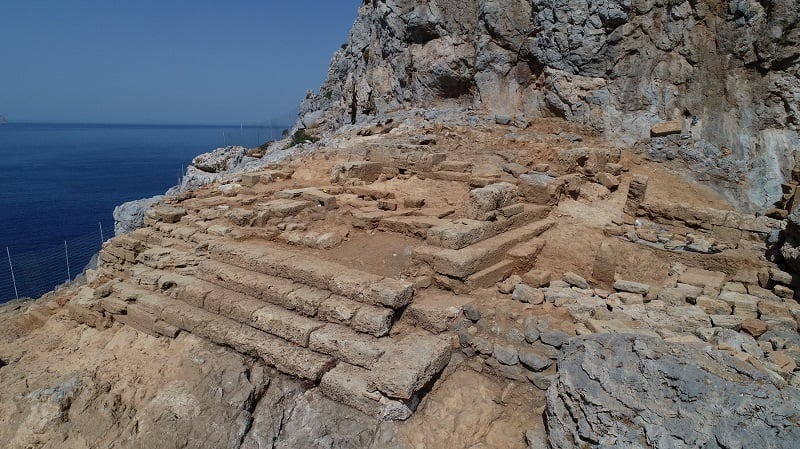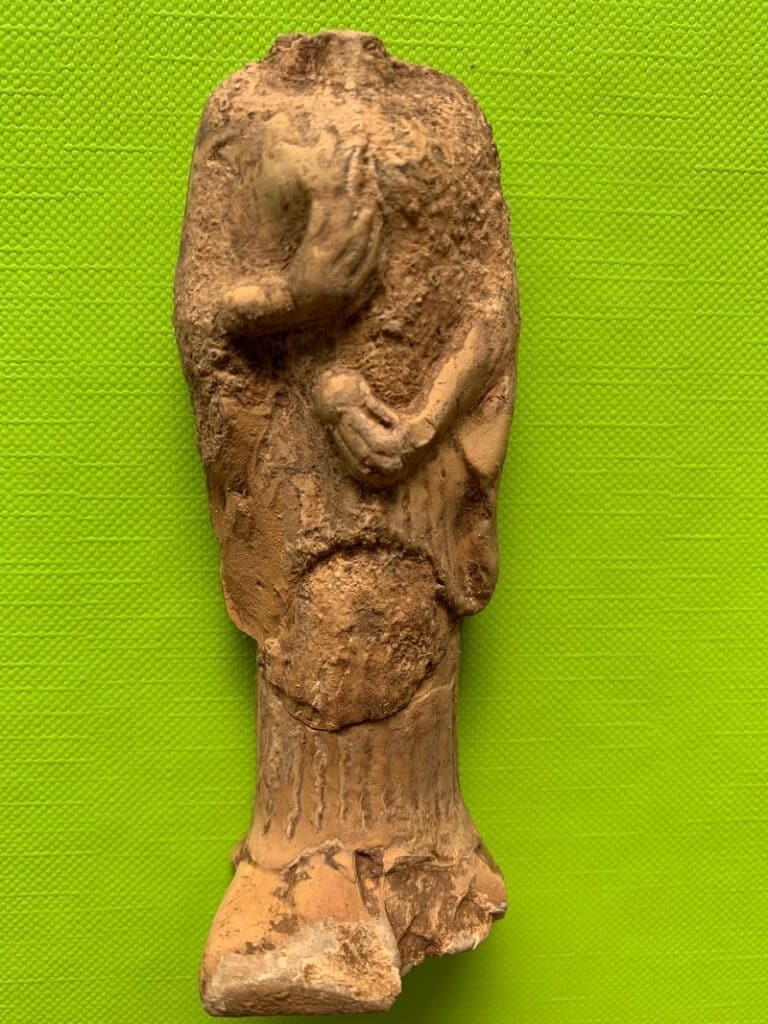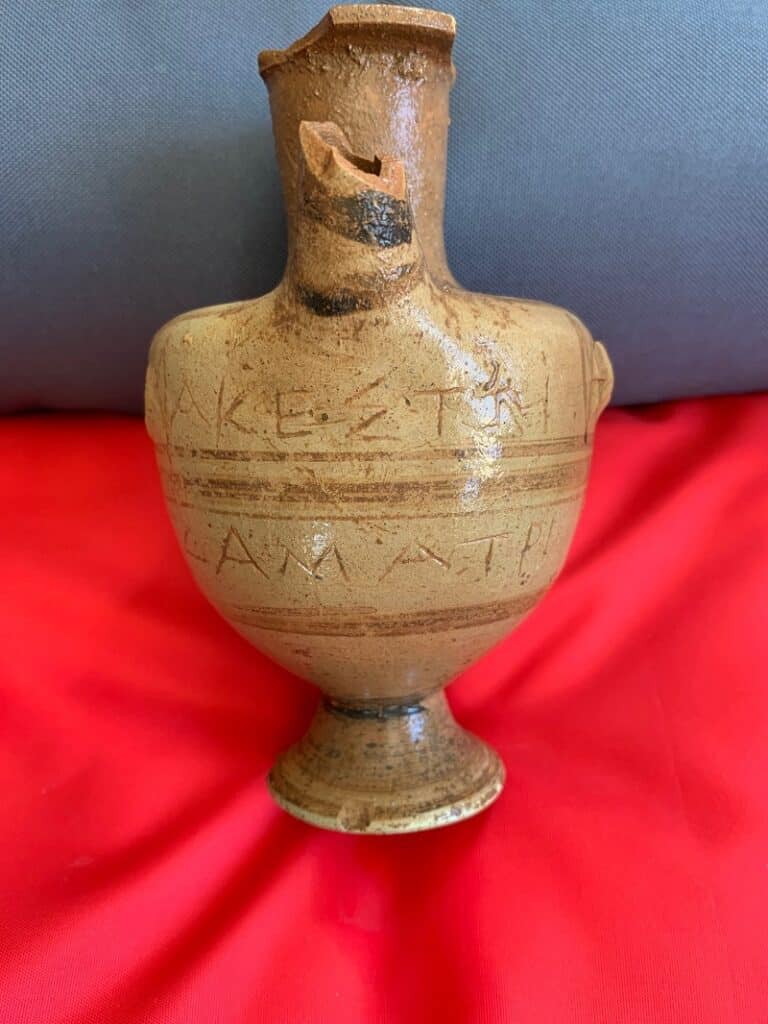
Work resumed recently at the ancient Temple of Demeter in Phalasarna, Crete and what archaeologists have unearthed so far is exceptionally significant as it pushes the site’s history back thousands of years.
While the 2022 excavations were hugely successful, revealing a trove of Archaic-period artefacts and confirming the existence of a sanctuary to the goddess Demeter on the city’s acropolis, new discoveries from 2023 and 2024 have unearthed something entirely different: a Neolithic layer. This proves that ritual use of this place began as early as 3500 BC.
How archaeologists discovered the Neolithic links of the site in Crete
The ancient Greek city-state of Phalasarna is best known for its fortifications from the Hellenistic era and its impressive harbor installations. The broader area of Phalasarna was a powerful maritime hub on the western coast of the island of Crete for many centuries. During the 2022 archaeological excavation season, experts brought to light hundreds of clay figurines, Egyptian and Phoenician glass objects, and vases inscribed with the name of Demeter in the Doric dialect. These were all clear signs of religious activity dedicated to the ancient Greek goddess of grain and fertility, showing the importance of her veneration on the island of Crete.
But these latest excavations of 2023 and 2024 revealed that long before Demeter was worshipped in a formal sanctuary, the site was a natural place of cult activity by earlier generations.

A cave with a freshwater spring seems to have been an open-air sacred space in the early 7th century BC. The cave eventually collapsed, and in its place, a formal temple was erected in the 5th century BC, showing the continuity of the sanctity of this place. The original water collectors were then repurposed as ritual deposit pits within the temple of Demeter.
Among the most exciting new discoveries is the Late Neolithic layer that archaeologists found in 2023–24 and are going to explore even further in this year’s excavations, which have already begun.
What archaeologists have already discovered
Archaeologists have already uncovered handmade ceramics, stone grinders, flint and obsidian tools, polished stone axes, and even bone artefacts. A handful of Minoan-era potsherds were also found, linking the site to an even wider span of Cretan prehistory.
The sanctuary is also offering new insights into cross-cultural interactions between the local populations of Crete and other Mediterranean civilisations. Figurines of women with tall polos crowns, diadems and Daedalic hairstyles, which date to the early 7th century BC, seem to show influences from the East, possibly connected to the Phoenician goddess Astarte. Other Phoenician artefacts found nearby make the theory of Cretan-Phoenician interactions even more plausible.
Offerings found in the natural rock-cut pits around the sanctuary also show that the famous Greek Thesmophoria festivals, the ancient agricultural rites in honour of Demeter and Persephone, were once celebrated here as well. The discovery of complete figurines of birds, pigs, turtles, and oil lamps offers experts solid proof to believe this theory.
Meanwhile, conservation and restoration efforts are expected to continue on the city’s fortified gate and the so-called Tower 2. Excavations have already revealed that the fortifications were built in the 4th century BC according to a single architectural plan, which is consistent with descriptions left by the ancient geographer Scylax.

The significance of the site was brought to a broader international audience in August 2024 at the European Association of Archaeologists’ annual conference in Rome. A lecture there presented the discovery of a black-figure depiction of Artemis’ birth within the sanctuary.
So far, over 500 objects and 200 architectural elements have been recovered in the last season alone, making the sanctuary of Demeter at Phalasarna a uniquely beautiful archaeological site. It offers valuable information about the religious life of ancient Crete, its cultural exchanges, strategic importance and deep prehistoric roots.
The importance of Phalasarna
Phalasarna was once a powerful maritime city-state, known in the ancient Greek world for its strategic harbour. Its natural geography helped the locals establish an artificial, fortified port carved from a coastal lagoon, which earned it mentions by ancient geographers like Scylax, Strabo, and Polybius.
Phalasarna had its own local laws, distinctive coins and a great reputation for military strength, as the city is even mentioned supporting Macedonian forces in their conflict with Rome. However, its involvement in piracy during the 3rd century BC led to its brutal downfall; Roman forces destroyed the city around 67 BC, sealing off the harbour and likely slaughtering its population. Forgotten for centuries, Phalasarna resurfaced in the 19th century, when it was rediscovered by British explorers as the ruins of a once-thriving city.

